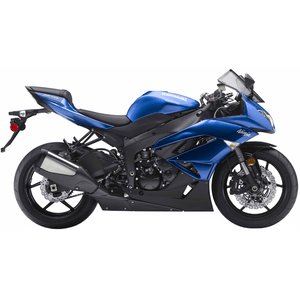Kawasaki ZX-6R Ninja (2009–2012): A Middleweight Masterclass Revisited
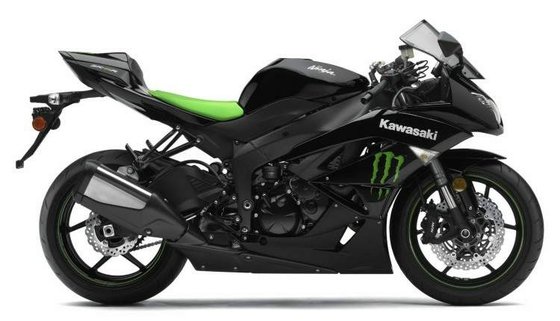
When Kawasaki unleashed the 2009 ZX-6R Ninja, it wasn’t just an update—it was a declaration of war in the hyper-competitive 600cc supersport arena. This generation, spanning 2009 to 2012, redefined what a middleweight sportbike could achieve, blending racetrack aggression with street-friendly precision. As a motorcycle that still turns heads in 2024, the ZX-6R remains a benchmark for riders seeking adrenaline without compromise. Let’s dissect why this Ninja continues to captivate—and how it holds up against modern expectations.
Design: Aggression Meets Aerodynamics
Aesthetics That Command Attention
The 2009–2012 ZX-6R adopted a “Sugomi” design language before the term became official Kawasaki lore. Its sharp, angular fairing—shared DNA with the ZX-10R—looks like it’s perpetually lunging forward. The Monster Energy Special Edition (2009) took this further with murdered-out black bodywork, green accents, and graphics that screamed track-day readiness. While some criticized its similarity to the liter-bike sibling, the design aged gracefully, avoiding the overly busy lines of later models.
Key Design Features: - Mass Centralization: A short-side muffler relocated weight from under the seat to the mid-section, contributing to a 191 kg (421 lb) wet weight—10 kg lighter than its predecessor. - Ergonomics: The 815 mm (32.3 in) seat height and revised rider triangle (bars 10 mm closer to the rider) struck a balance between aggressive tucks and all-day comfort. - Aerodynamics: The one-piece front fender and reshaped fairing improved wind deflection, though taller riders noted buffeting at speeds above 160 km/h (100 mph).

Engine Performance: The Sweet Science of RPM
The 599cc Inline-Four Symphony
Kawasaki’s engineers didn’t just tweak the engine—they reinvented it. The 2009 model’s 134 hp (98.5 kW) with Ram Air wasn’t just a number; it was a statement. Unlike peaky competitors, the ZX-6R delivered a rare blend of mid-range grunt and top-end fury:
- Mid-Range Magic: Double-bore velocity stacks and revised cam profiles boosted torque to 66.7 Nm (49.2 lb-ft) at 11,800 rpm. From 8,000 rpm onward, the bike surged forward with a linearity that felt almost liter-bike-esque.
- High-RPM Savagery: Past 12,000 rpm, the engine transformed into a snarling beast, hitting its 16,000 rpm redline with a ferocity that left the Honda CBR600RR feeling polite.
- Street Smarts: Fuel injection calibration allowed sixth-gear puttering at 30 km/h (19 mph)—a rarity in a class known for stalling drama.
Real-World Efficiency
Despite its track roots, the ZX-6R returned 5.3 L/100 km (44.6 US mpg) during spirited rides. Commuters could stretch that to 4.7 L/100 km (50 US mpg) with restraint—a feat for a 14,000 rpm screamer.
Handling: Where Physics Meets Art
The Big Piston Fork Revolution
Kawasaki’s boldest move was adopting Showa’s 41 mm Big Piston Fork (BPF)—a first in production bikes. Unlike conventional cartridge forks, the BPF’s larger piston reduced damping pressure, offering:
- Unshakable Front End Grip: Under hard braking, the fork remained composed, eliminating the “spongy” feel of rivals.
- Adjustability: Stepless compression/rebound damping let riders fine-tune from canyon carving to Daytona International Speedway.
Chassis Dynamics
- Aluminum Perimeter Frame: Revised stiffness around the swingarm pivot sharpened turn-in. Paired with an Öhlins steering damper, the bike laughed at headshake.
- Swingarm Science: Shared components with the ZX-10R (including pivot points and chain guard) added rigidity without weight penalties.
- Braking Credentials: Radial-mounted Nissin calipers bit into 300 mm petal discs with a two-finger urgency that still rivals modern setups.
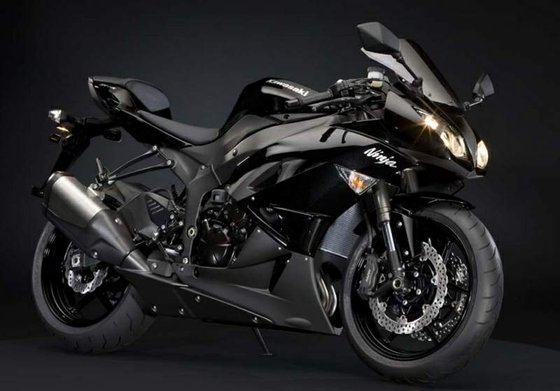
Competition: How the Ninja Stacked Up
Yamaha YZF-R6
- Strength: A 16,500 rpm redline and razor-sharp handling.
- Weakness: Anemic mid-range required constant gearbox abuse.
- ZX-6R Edge: The Kawasaki’s BPF fork and torque advantage made it less punishing on real-world roads.
Honda CBR600RR
- Strength: Buttery-smooth inline-four and sublime ergonomics.
- Weakness: Soft suspension out of the box.
- ZX-6R Edge: Aggressive styling and a raucous exhaust note gave the Ninja more personality.
Triumph Daytona 675
- Strength: 675cc triple’s low-end punch and addictive growl.
- Weakness: Higher maintenance costs and tighter service intervals.
- ZX-6R Edge: Kawasaki’s dealer network and aftermarket support tilted practicality.
Maintenance: Keeping the Ninja Sharp
Critical Service Points
- Oil Changes: Every 6,000 km (3,700 mi) with 10W-40 synthetic. Watch for magnesium engine cover corrosion—common in coastal climates.
- Valve Adjustments: Every 24,000 km (15,000 mi). Shim-under-bucket design requires patience but ensures longevity.
- Suspension Tuning: The BPF fork benefits from annual fluid changes. Use Showa SS-8 oil for factory plushness.
- Chain Care: The O-ring chain demands weekly lubrication. Upgrade to a DID ERV3 for track use.
MOTOPARTS.store Upgrades
- Exhaust: Replace the bulky stock muffler with a LeoVince LV Race Evo (-3 kg weight savings).
- Levers: Adjustable shorty levers (e.g., Pazzo Racing) improve lever feel for smaller hands.
- Seat Cowl: The factory option (fits 2009–2012) cleans up the tail for solo rides.
- Tires: Bridgestone Battlax Hypersport S22 (stock sizing) modernize grip without altering geometry.
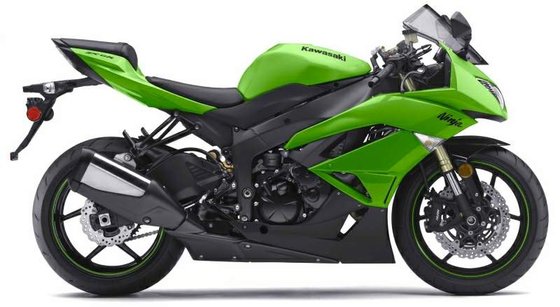
The Verdict: Timeless Thrills
The 2009–2012 ZX-6R Ninja wasn’t just a superbike—it was a masterclass in balance. It courted track-day warriors with its BPF fork and cassette gearbox but remained grounded enough for Sunday rides. While later models added rider aids, this generation’s purity—raw, analog, and demanding respect—makes it a modern classic. For riders who value mechanical symbiosis over digital nannies, the Ninja’s roar still echoes louder than ever.
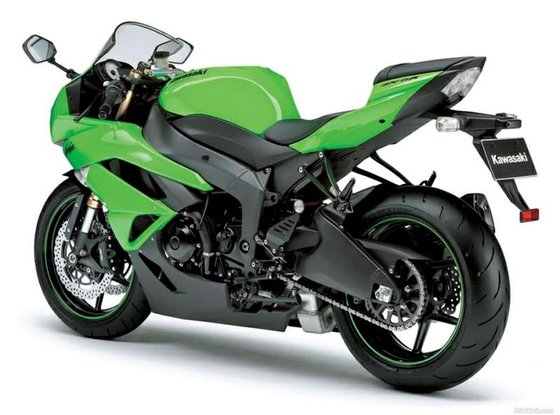
Ready to unleash your ZX-6R’s full potential? Explore MOTOPARTS.store’s curated selection of upgrades—because even legends deserve a second act.















Specifications sheet
| Engine | |
|---|---|
| Stroke: | Four-stroke |
| Ignition: | TCBI with digital advance |
| Max power: | 94 kW | 126.0 hp |
| Max torque: | 67 Nm |
| Fuel system: | DFI® with four 38mm Keihin throttle bodies, oval sub-throttles, two injectors per throttle body |
| Max power @: | 14000 rpm |
| Displacement: | 599 ccm |
| Max torque @: | 11800 rpm |
| Configuration: | Inline |
| Cooling system: | Liquid cooled |
| Compression ratio: | 13.3:1 |
| Max power Ram Air: | 98.5 |
| Number of cylinders: | 4 |
| Dimensions | |
|---|---|
| Wheelbase: | 1400 mm (55.1 in) |
| Wet weight: | 191 |
| Seat height: | 815 mm (32.1 in) |
| Overall width: | 705 mm (28.0 in) |
| Overall height: | 1115 mm (43.9 in) |
| Overall length: | 2090 mm (82.3 in) |
| Ground clearance: | 120 mm (4.7 in) |
| Fuel tank capacity: | 17 L (4.5 US gal) |
| Drivetrain | |
|---|---|
| Final drive: | chain |
| Gear ratios: | ['1st 2.714 (38/14)', '2nd 2.200 (33/15)', '3rd 1.850 (37/20)', '4th 1.600 (32/20)', '5th 1.421 (27/19)', '6th 1.300 (26/20)'] |
| Transmission: | 6-speed, wet multi-disc slipper clutch |
| Rear sprocket: | 43 |
| Front sprocket: | 16 |
| Final reduction ratio: | 2.688 (43/16) |
| Primary reduction ratio: | 1.900 (76/40) |
| Maintenance | |
|---|---|
| Rear tire: | 180/55 z-17 |
| Engine oil: | 10W40 |
| Front tire: | 120/70 z-17 |
| Brake fluid: | DOT 4 |
| Spark plugs: | NGK CR9E or NGK CR9EIX |
| Spark plug gap: | 0.7 |
| Coolant capacity: | 2.5 |
| Engine oil capacity: | 3.1 |
| Valve clearance (intake, cold): | 0.10–0.20 mm |
| Valve clearance check interval: | 24,000 km / 15,000 mi |
| Valve clearance (exhaust, cold): | 0.20–0.30 mm |
| Recommended tire pressure (rear): | 2.9 bar (42 psi) |
| Recommended tire pressure (front): | 2.5 bar (36 psi) |
| Additional Features | |
|---|---|
| Instrumentation: | Gear position sensor, Öhlins damper status indicator |
| Steering damper: | Öhlins adjustable steering damper |
| Special editions: | Monster Energy® Edition, 25th Anniversary Edition (Akrapovic exhaust, rearsets) |
| Chassis and Suspension | |
|---|---|
| Rake: | 24° |
| Frame: | Aluminum perimeter |
| Trail: | 102-103 mm (4.0-4.1 in) |
| Rear brakes: | Single 220mm petal disc, 1-piston caliper |
| Front brakes: | 2 x 300mm petal discs, radial-mount 4-piston calipers (ABS available on some models) |
| Rear suspension: | Bottom-Link Uni-Trak® with gas-charged shock, dual-range compression damping, 25-way rebound damping |
| Front suspension: | 41mm inverted Showa Big Piston Fork (BPF), fully adjustable (compression, rebound, preload) |
| Rear wheel travel: | 134 mm (5.3 in) |
| Front wheel travel: | 120 mm (4.7 in) |



